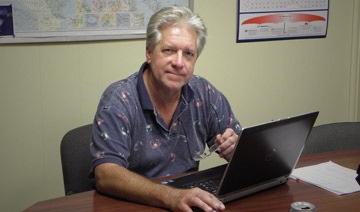
Quality Partnerships
As a manufacturer of high-reliability magnetics and electronics assemblies, STC often works in partnership with clients to ensure that our products meet the unique quality requirements for each specific project.
These requirements are in addition to STC’s existing quality and production certifications, and they are created to supplement quality procedures and help maintain error-free use in the field. They also include periodic assessments and audits performed by client project managers during onsite visits.
One recent onsite visit was from Warren Witmer, who works as Supplier Development Project Manager for Honeywell International. Witmer, who is also a Six Sigma Black Belt as well as a Quality Control Engineer, visits STC throughout the year to conduct inspections, process reviews, and carry out other quality-assurance related tasks.

During his visits, Witmer works closely with STC Quality Manager Angie Calkin, who is responsible for implementing and overseeing the various quality programs at STC. According to Calkin, Witmer’s onsite visits add value to STC’s quality programs.
“We generally see Warren several times a year. His visits include supplier-development education, supplier assessments, and occasionally he performs field quality engineer duties such as first-article inspection and self release audits,” Calkin says. “I always enjoy Warren’s visits. They are generally productive and informative.”
When Witmer goes back to Honeywell, Calkin says, the cooperative work continues.
“Warren plays an essential role in our relationship with Honeywell. He is our go-to guy when an issue arises and we don’t know who in the organization to reach out to. If Warren can’t resolve the issue himself, he points us to appropriate person.”
These types of partnerships are not uncommon when it comes to the complex projects, and STC staff members are accustomed to making them work—for both STC as well as for our partners.
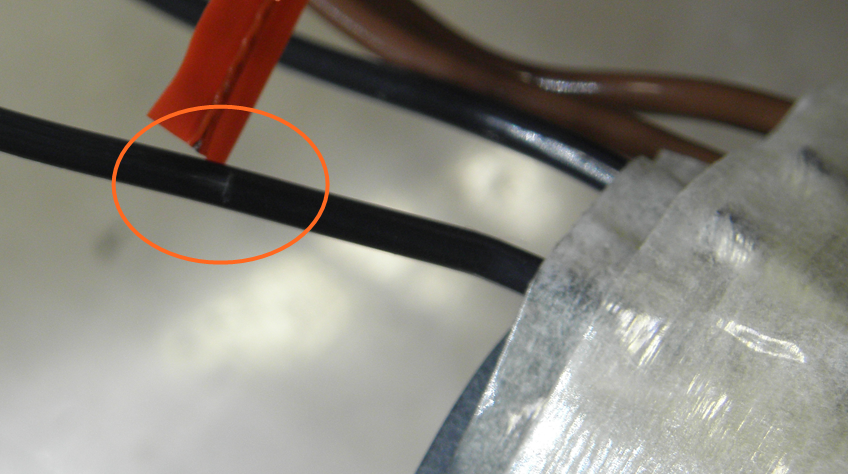
STC Celebrates 30 Years
STC is celebrating their 30th anniversary as a manufacturer of high-reliability electronics and transformers. As an ISO 9001 certified business, STC provides product design, development, manufacturing, assembly, testing, and sustainment services.
When asked to comment on why Sun Transformer has been able to grow and succeed for so many years, Production Supervisor Linda Shaw was politely interrupted by Tammie, a member of the Production team.
Tammie was concerned that a very slight nick in the lead-wire insulation for an assembled hardware component should be replaced. Linda looked closely at the lead wire, agreed with Tammie that it should be replaced, and said “Yes, [customer name] would not like this. I’ll replace the wire and take it to the Testing Department when I’m done.”
To an outsider, the nick was barely visible. To both Tammie and Linda, it was enough to keep the transformer from passing mechanical inspection.
“As a part of this company, we have learned to care about our customer’s needs and make sure we complete our orders on a timely basis and with the utmost quality. We also have established good communication with both our customers and employees.”
Later that day, after replacing the lead-wire and considering the initial question, Linda was able to offer some insightful comments.
“As a part of this company, we have learned to care about our customer’s needs and make sure we complete our orders on a timely basis and with the utmost quality. We also have established good communication with both our customers and employees.”
When asked about STC president Brad Cross, Linda continues.
“He has been a very good leader because he works hard to operate a successful company. He listens and works with staff and employees alike to make sure everyone knows they are an important part of the company.”
Perhaps Tammie and Linda’s action earlier that day are the most telling reason for why STC remains an industry leader when it comes to high-reliability electronic manufacturing services.
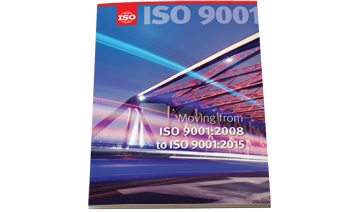
STC on Track for ISO Revision
STC has been certified to the ISO 9001 quality program continually since 1999, and STC achieved re-certification in November of this year.
The ISO 9001 standards are revised every five years or so, requiring periodic recertification to the latest ISO revision. The standard was revised again this year, updating the previous 2008 standard.
The latest revision is ISO 9001:2015, which requires greater emphasis toward anticipating the risks present in the organization’s environment.
This risk-based thinking is not new to the ISO 9001 quality management system, which has always focused on anticipating and preventing mistakes. However, the revised standard has made the approach explicit by specifically addressing Organizational Context, Leadership, Planning, Support, and Performance Evaluation.
“It’s left very much up to the organization, taking into consideration, of course, their customer requirements and the regulatory framework in which they may operate, to define their own needs for documentation in order to manage the processes.”
While discussing the 2015 revision, Nigel Croft, Chair of the ISO subcommittee that developed and revised the standard, emphasized the flexible nature of the new standard.
According to Croft, “It’s left very much up to the organization, taking into consideration, of course, their customer requirements and the regulatory framework in which they may operate, to define their own needs for documentation in order to manage the processes.”
“It provides the confidence, that’s the key word, confidence, that customers around the world—right through the supply chain, business-to-business, business-to-consumer, right down to us as individuals—can have confidence in the products and services that they’re receiving from their certified suppliers.”
Because STC was recently re-certified to the 2008 revision, the Quality team is in the process of implementing a plan for meeting new requirements as early as next year.
Angie Calkin, Vice President of Operations at STC, is pleased with the company’s ability to meet the revised standard.
“Because we’ve considered and planned for the various risks that exist for us, the 2015 revision is not very different from the way we’ve done things,” Calkin said. “The biggest change for us will be in the documentation of some of these things.”
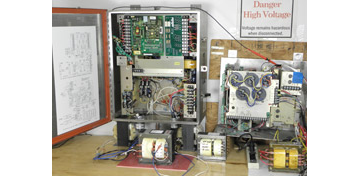
Electronic Enthusiasm at STC
Many of the inquiries we received here at STC are from engineers or buyers from businesses with new products in development. These callers are often looking for design assistance and/or contract manufacturers able to provide electronic assemblies for their new products.
During these conversations, we often ask a lot of questions about their new product. Sometimes the business reps are forthcoming about the new products, often times not so much. We try to be understanding for both cases. We also try to make it clear why we are so inquisitive.
It all comes down to this: We are not only genuinely enthusiastic about what we do, but we also have the knowledge and experience to offer the best design and performance solutions.
Because a large percentage of our work is on custom designs with detailed electrical requirements, it’s not uncommon for us to perform full testing of our sub-assemblies in complete product assemblies.
This testing, which is performed at our in-house testing lab, often includes evaluation of our sub-assemblies in several varying voltage and frequency-input combinations, ambient temperatures and different equipment operating modes. This testing ensures our sub-assemblies function optimally within the customer’s system. Important parameters that are evaluated include heat rise, efficiency, and current draw for a sub-assembly over a wide range of input conditions.
While time is of the essence, and 100-percent performance is the standard, our eagerness for getting your design and production right has remained from the start. Let us know how we can help you.
STC Product Highlights
If you’ve spent any time looking through our website, you’ve undoubtedly noticed the various types of electronic components and transformers that are designed and manufactured by STC. In this article, we’ll look at three specific product types, as well as information about the equipment in which these components are found.
Electronic Controls
In the field of printed circuit assemblies, electronic controls is another of the many specialty areas for STC.
Many of these types of PCB assemblies are used in coded secure-entry systems, which are capable of tracking who enters and leaves equipped premises. STC has valuable experience providing both solenoid and motor controls for these types of systems. As with all of our electronic assemblies, we provide everything from the design and build of power-supply components, PC boards, and cable harnesses.
Control Transformers
As the name implies, control transformers are used to apply power for the control circuitry for a wide range of equipment, everything from medical equipment (including medical imaging, patient lift systems, and others), to industrial shop equipment (including compressors, hoist, and others) to vacuum-sealing devices and many others.
STC has experience working with customers to design and build transformer models that are made to work with their specific systems. There is no need to select an off-the-shelf unit that requires adapting your system to the transformer.
Low-Profile Transformers
The low-profile transformers from STC go by the series name “LPC” and are ideal for assemblies requiring a printed circuit board (PCB) where vertical space is at a premium.
STC is an ideal partner in providing complete electronics assemblies, including low-profile transformers, PCB assembly, and wiring harnesses.
Much of our experience has also involved requirements such as two-party design, source traceability, ISO quality procedures, product testing, and close work with our customers to verify that their own quality requirements are met.
Please contact us to see how STC can help with your next project.
The Benefit of Experience
In the 28 years since STC was formed, we have supplied custom components to high-reliabilitiy commercial, military, and aerospace programs. To get to the point where a company can effectively supply components for these types of projects, there are a number of key steps that must be taken first.
One of the first steps is to implement and certify an ISO quality program, which STC has done continuously since 1999. In addition to the ISO quality system, there are other certifications that benefit both the supplier and purchasing customer (for example, IPC-A-610 and J-STD-001 certification, which address the soldering and acceptability of electronic components).
According to STC VP of Operations Angie Calkin, much of the work beyond ISO certification is dictated by the projects themselves.
“You have to be willing to work with whatever requirements that are specified by the customer,” says Calkin. “Whether it be following first-article requirements or being proactive in reporting delivery dates, if you’re not willing to follow the requirements, you’re not going to make it as a supplier for these projects.”
As Calkin describes it, experience in working on these types of projects is invaluable.
“A lot of it is also building a reputation over the years. During the past five years, we’ve rarely been late on a delivery. At the same time, customers often ask us to push a date sooner, and we work with them as much as possible to do that.”
Calkin is able to describe, in detail, the requirements often specified by these types of projects, as well as the online supplier sites used to report accounting, manufacturing, engineering, and quality data. This focus on detail is shared by the entire STC staff.
As an example, an STC customer recently wrote:
“When I deal with STC, I always feel that your company values our business relationship, and that you dedicate the time and energy to get things right. I always feel confident that when you communicate concerns, they are intelligent questions—asking about genuine issues that may affect acceptance… Your attention to detail simply displays to me that you care about doing things right, and by the book, and that you really care about delighting your customers. This is so refreshing. Thanks for all you do, and for your exceptional attention to detail.”
On behalf of the entire STC staff, thank you. We’re doing our best.
Three “Underrated” Reasons to Order from STC
While our quality, manufacturing capabilities, pricing, and testing are prime reasons our customers continue to turn to STC, there are significant, but less obvious, reasons to considering STC for your upcoming projects. Here they are in reverse order:
3. Near the US Population Center: Our location in Illinois puts us in a fine spot when it comes to both shipping times and costs—particularly for heavy parts like iron-core transformers. Our shipments are securely packaged and are sent according to customer preferences, which may include ground, freight, or express (depending on shipment size).
2. We Still Answer the Phone / Respond to Online Inquiries: A large number of transformer and electronics suppliers have moved overseas. Of those still based in the US, many import a large portion of their product catalog from overseas. As has been the case since 1986, all of our transformers are made in the USA, and we have the expertise to answer any questions you may have. Do you need to know something specific about your project? Your design engineer is only a phone call (or email) away.
1. Involvement from Initial Design to End Product: This is where it really gets fun. We enjoy being involved in new projects right from the start—and we have the expertise to offer meaningful contributions very early in the process. Whether the need is for aircraft lighting transformers or printed circuit assemblies for a cutting-edge Kickstarter campaign, we have the capability to help at day one.
Contact us to learn more about how we can help you.
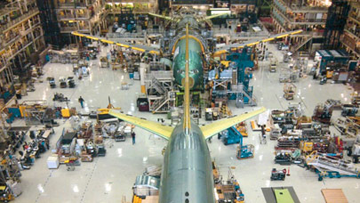
STC to be Supplier for New Boeing Tanker
STC, Inc. has been selected as a component supplier for Boeing’s new 767-2C tanker, which is currently in production and will be adapted into a KC-46 aerial refueling tanker for the U.S. Air Force.
STC has been suppying electronic components for avionics since it’s beginning as a company in 1986. The components manufactured by STC include transformers used in auto-flight systems, flight-instrument systems, and both exterior and interior lighting systems.
This most recent project is for the manufacture of transformers supplying power for exterior lights used to illuminate refueling areas. This project is a point of pride for STC, Inc. employees, on a number of levels.
The timely delivery of high-quality parts helps support the men and women of our armed forces who will be utilizing the installed equipment in the field. STC’s ability to serve as a supplier requires a high level of commitment to our own quality program, as well as to the quality requirements of our customers.
Additionally, STC’s involvement demonstrates our position as a company, having implemented demanding quality standards early on, and then methodically broadening those standards with an eye toward continual improvement.
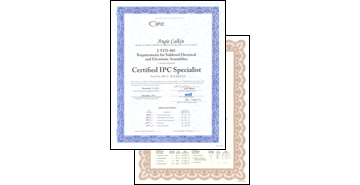
STC Employees Complete Standards Training
In mid-December, STC hosted two separate training classes for company production personnel. A total of 17 employees attended one of the two training classes—and received certification for their respective class.
Ten employees attended the J-STD-001 classes, which trains production staff on soldering practices and processes as covered by the J-STD-001 requirements.
Seven employees attended the IPC-A-610 classes, which instructs supervisory staff on the soldering inspection standards covered by the IPC-A-610 requirements.
These certifications further help STC serve as a qualified vendor for high-reliability applications. Please contact us for more information about our capabilities as an Electronics Manufacuring Service (EMS) provider.
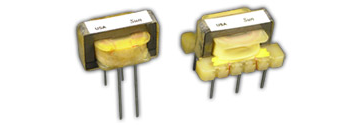
Application Profile – Medical Equipment
STC has provided electronic components for medical equipment used in the healthcare industry since its inception as a company in 1986. Since that time, we have expanded our product portfolio to include components for a increasingly diverse range of medical devices—from medical imaging equipment to medical beds to devices such as Peripheral Nerve Stimulators (PNS).
The PNS is used along with the delivery of anesthetic agents and is considered essential in measuring the patient’s neuromuscular state, thus allowing the administrator to appropriately administer the dosage of the relaxant being delivered. The clinical signs of neuromuscular recovery, such as the ability to lift the head, sustain a hand squeeze, and open the eyes cannot be elicited during the course of anesthesia alone. However, with the aid of a PNS, the patient’s neuromuscular state can be more easily evaluated by the stimulation of the nerve.[1]
Typically, the stimulator is superficially placed near the ulnar nerve, facial nerve, or the posterior tibial nerve. When the nerve is stimulated, the intensity of patient response, shown by the twitch of the thumb, indicates the degree of neuromuscular relaxation. Maintaining the proper degree of relaxation helps minimizes the risks in the postoperative period and maintains patient safety.
Through the years, the PNS has undergone several refinements which have led to new types of nerve stimulation such as cranial nerve stimulation and spinal nerve root stimulation.[2] Studies indicate that neuropathic pain responds well to nerve stimulation. The PNS works well in relatively new remedies for neuromodulation such as migraines, headaches, and even fibromylgia.[3]
The PNS has been successfully applied in clinical situations for chronic pain in extremities, neck, lower back, chest, abdominal wall, head, and face regions.[4]
Transformers used in PNS unitsWith electronic components, like those for the PNS, there are numerous factors to consider: stimulus frequency, electrode type, position and polarization, stimulus intensity, duration and waveform.
In the design of these electronic components, all of the above factors are addressed by our lead technical staff, the design process begins, and the components are made to customer specification.
All STC products are made in the USA at our ISO 9001:2008 registered plant in McLeansboro, IL. As with all components produced by STC, components made for medical equipment follow our rigid quality-control system and are 100-percent tested to ensure they meet both customer specifications and our own quality standards.
- Hudes Elliot MD and Lee, Kwok C. M ENG MD PH D. “Clinical Use of Peripheral Nerve Stimulators in Anaesthesia.” Canadian Journal of Anaesthesia September 1987: p. 525
- Stuart, RM and Winfree, CJ. “Neurostimulation Techniques for Painful Peripheral Nerve Disorders.” Department of Neurological Surgery – Columbia University Medical Center, New York 2009. PMID: 19064184 2009. Print.
- Slavin, KV. ” Peripheral Nerve Stimulation for Neuropathic Pain.” Department of Neurosurgery – University of Illinois at Chicago, 2008. PMID: 18164488. Print.
- Rasskazoff, SY and Slavin, KV. “An Update on Peripheral Nerve Stimulation.” Department of Neurosurgery – University of Illinois at Chicago, 2012. PMID: 23111288. Print

